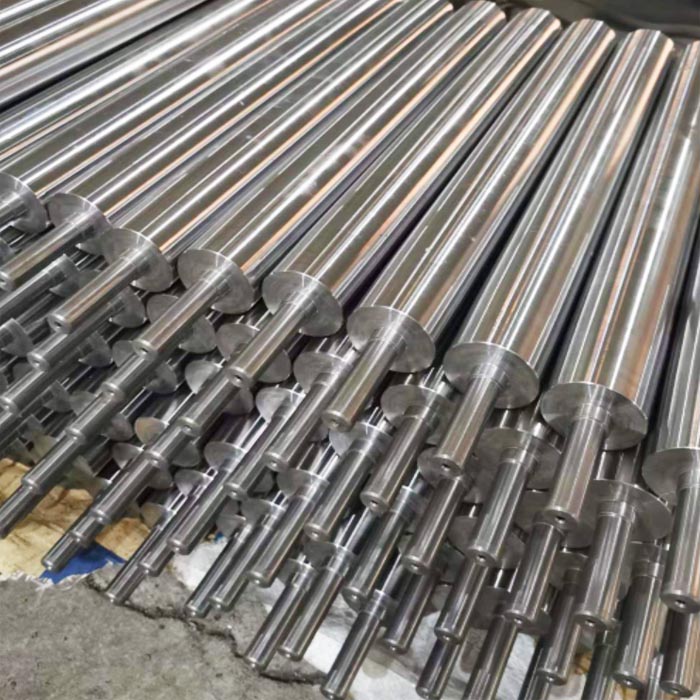There are different classification methods for rolls. According to the shape of the roll body, it is divided into cylindrical and non-cylindrical, the former is mainly used for the production of plates, strips, profiles and wires, and the latter is mainly used for the production of pipes. It is divided into working rolls and backup rolls according to whether they are in contact with the rolling stock. The rolls that directly contact the rolling stock are called work rolls; the rolls that are placed on the back or side of the work rolls without directly contacting the rolling stock to increase the stiffness and strength of the work rolls are called backup rolls. According to the use of the stand, it is divided into blooming rolls, roughing rolls, intermediate rolls and finishing rolls. According to the variety of rolling materials, it is divided into strip rolls, rail beam rolls, wire rod rolls and pipe rolls. It can also be divided into hot rolls and cold rolls according to the state of the rolling stock during rolling.

The working conditions of the rolls in the rolling mill components are the most complex. Residual stress and thermal stress are generated during the preparation process of rolls before manufacture and use. In use, it is further subjected to various cyclic stresses, including bending, torsion, shear, contact stress and thermal stress. The distribution of these stresses along the roll body is non-uniform and constantly changing, due not only to design factors, but also to the constant changes in roll wear, temperature and roll shape during use. In addition, the rolling conditions are often abnormal. Improper cooling of rolls after use can also be damaged by thermal stress. Therefore, in addition to wear, the rolls often appear various local and surface damages such as cracks, fractures, peeling, and indentations. A good roll should have a good match between its strength, wear resistance and various other performance indicators. In this way, it is not only durable under normal rolling conditions, but also less damaged when some abnormal rolling conditions occur. Therefore, when manufacturing rolls, the metallurgical quality of the rolls should be strictly controlled or supplemented by external measures to enhance the bearing capacity of the rolls. Reasonable roll shape, pass, deformation system and rolling conditions can also reduce the work load of the roll, avoid local peak stress, and prolong the life of the roll.
Roll consumption is determined by three factors: ① rolling mill, rolling material and rolling conditions, and reasonable selection of rolls;
②Roll material and its manufacturing quality;
③ The use and maintenance system of the rolls.
China began to mass-produce casting rolls in the 1930s, but there were very few varieties. In the late 1950s, China's first professional roll factory was established in Xingtai, Hebei. In 1958, Anshan Iron and Steel Company first trial-manufactured and used 1050 large ductile iron rolls for blooming. In the 1960s, it successfully manufactured cold-rolled work rolls and large-scale forged steel rolls. In the late 1970s, Taiyuan Iron and Steel Company and Beijing Iron and Steel Research Institute jointly successfully trial-produced centrifugally cast cast iron rolls for furnace coil mills and hot continuous rolling strip mills, and Xingtai Metallurgical Machinery Roll Co., Ltd. successfully trial-produced semi-steel work rolls for hot strip rolling mills. and work rolls for cold-rolled wide-band steel mills. In the 1980s, China successively developed new varieties of large-scale forged steel backup rolls, forged semi-steel and forged white cast iron rolls, powdered tungsten carbide roll rings, and high-chromium cast iron rolls. By the 1990s, China's roll production had basically met domestic needs and some were exported, but the varieties needed to be increased and the quality had to be improved.

Post time: Mar-28-2022
